Looking at the link - how to have relations many to many in redis. I tried to model this using Spring Data Redis HashRedis class. This example model....
# Here are my categories
> hmset category:1 name cinema ... more fields ...
> hmset category:2 name music ... more fields ...
> hmset category:3 name sports ... more fields ...
> hmset category:4 name nature ... more fields ...
# Here are my users
> hmset user:1 name Jack ... more fields ...
> hmset user:2 name John ... more fields ...
> hmset user:3 name Julia ... more fields ...
# Let's establish the many-to-many relationship
# Jack likes cinema and sports
# John likes music and nature
# Julia likes cinema, music and nature
# For each category, we keep a set of reference on the users
> sadd category:1:users 1 3
> sadd category:2:users 2 3
> sadd category:3:users 1
> sadd category:4:users 2 3
# For each user, we keep a set of reference on the categories
> sadd user:1:categories 1 3
> sadd user:2:categories 2 4
> sadd user:3:categories 1 2 4
Once we have this data structure, it is easy to query it using the set algebra:
Categories of Julia
> smembers user:3:categories
1) "1"
2) "2"
3) "4"
# Users interested by music
> smembers category:2:users
1) "2"
2) "3"
# Users interested by both music and cinema
> sinter category:1:users category:2:users
1) "3"
User.java
@Data
@AllArgsConstructor
@NoArgsConstructor
@Builder
@RedisHash("users")
public class User {
@Id
private String userId;
private String firstName;
private String emailId;
private List<Category> categories;
}
Category.java
@Data
@AllArgsConstructor
@NoArgsConstructor
@Builder
@RedisHash("category")
public class Category {
@Id
private String categoryId;
private String name;
private String type;
private List<User> users;
}
RedisExampleBootApplication.java
@SpringBootApplication
public class RedisExampleBootApplication implements CommandLineRunner{
@Autowired CategoryRepository categoryRepository;
@Autowired UserRepository userRepository;
public static void main(String[] args) {
SpringApplication.run(RedisExampleBootApplication.class, args);
}
@Override
public void run(String... args) throws Exception {
User jack = User.builder().firstName("Jack").emailId("jack@gmail.com").build();
User john = User.builder().firstName("John").emailId("john@gmail.com").build();
User julia = User.builder().firstName("Julia ").emailId("julia @gmail.com").build();
Category cinema = Category.builder().name("Cinema").type("Entertainment").users(Arrays.asList(jack, julia)).build();
Category sports = Category.builder().name("Sports").type("Play Game").users(Arrays.asList(jack)).build();
Category music = Category.builder().name("Music").type("Sounds").users(Arrays.asList(john, julia)).build();
Category nature = Category.builder().name("Nature").type("Wild Life").users(Arrays.asList(john, julia)).build();
categoryRepository.save(cinema);
categoryRepository.save(sports);
categoryRepository.save(music);
categoryRepository.save(nature);
Category myCinema = Category.builder().name("Cinema").name("Entertainment").build();
Category mySport = Category.builder().name("Sports").name("Play Game").build();
Category myMusic = Category.builder().name("Music").name("Sound").build();
Category myNature = Category.builder().name("Nature").name("Wild Life").build();
User myJack = User.builder().firstName("Jack").emailId("jack@gmail.com").categories(Arrays.asList(myCinema, mySport)).build();
User myJohn = User.builder().firstName("John").emailId("john@gmail.com").categories(Arrays.asList(myMusic, myNature)).build();
User myJulia = User.builder().firstName("Julia ").emailId("julia @gmail.com").categories(Arrays.asList(myCinema,myMusic, myNature)).build();
userRepository.save(myJack);
userRepository.save(myJohn);
userRepository.save(myJulia);
}
}
Here is the result of Data Modeling
127.0.0.1:6379> KEYS *
1) "category:0bcba339-9a3e-46e3-b33c-877f8d15595f"
2) "category:4d2b8d10-83de-41fa-8a33-93f30a6f9ffc"
3) "category:f756f18c-53e4-4a20-9a42-ad08b537f380"
4) "category"
5) "users:644d0adc-f0cf-4ba1-8d6b-d6f47145e5e7"
6) "users:8aa5c578-4e05-4ae9-8f80-d10b789e0877"
7) "users:825ab11b-803a-4e4f-a72d-e6b42b98007c"
8) "category:54a56102-5836-41bf-86a8-c82b3f12d3cf"
9) "users"
127.0.0.1:6379>
I've not used @Indexed anywhere, because currently I am not using any findBy method, but thats not the issue. I just need confirmation on how to model the data? Or POJO modelling is correct ?
HGETALL users:8aa5c578-4e05-4ae9-8f80-d10b789e0877
userId 8aa5c578-4e05-4ae9-8f80-d10b789e0877
_class com.example.model.User
firstName Jack
emailId jack@gmail.com
categories.[1].name Play Game
categories.[0].name Entertainment
